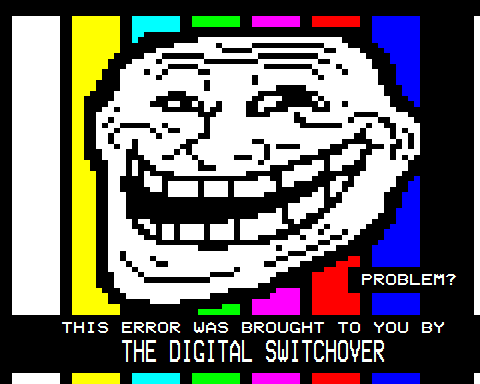A timeline of events in teletext's history, sourced from this blog, Wikipedia and this.
1960s - Post Office researches 'Viewdata', a system connected via telephones.
1972 - The name 'Teledata' (Transmission of Alphanumeric Data via television) patented.
1974 - After development, Teletext goes live with 30 pages.
1976 - Teletext upgrades service. Palette of colours increased to 8 and coloured backgrounds now enabled.
1977 - First TV sets with built-in teletext encoders produced.
1980 - 'Pages from Ceefax' first broadcast.
1981 - Teletext upgraded to level 2, providing improved graphics. No British broadcasters adopt it.
Mid 1980s - Virtually every European TV set has built-in teletext encoding.
1990 - BBC finishes Telesoftware, its version of teletext for the BBC Micro home PC. The news service provided by ITN ends as ORACLE is shut down.
1996 - Ceefax relaunches in response to the popularity of ITV's Teletext service.
2000 - Digital teletext goes live. Level 2.5 (Hitext) introduced, providing enhanced text and graphics services. No British broadcaster adopts it.
2001 - Teletext broadcasts news of September 11th attacks. It proves a reliable service as pages of major news websites crash, overloaded with visitors. 5 text, channel 5's resident teletext service, closes.
2005 - BBC's Nightscreen service ends.
2008 - First analogue receivers that transmit teletext switched off. 1.133 Billion users of the Internet. Over 500 teletext services available online.
2012 - Ceefax, the world's first teletext service, completely phased out with the last of the analogue receivers switched off.
Thursday, 20 September 2007
Subscribe to:
Post Comments (Atom)



0 comments:
Post a Comment